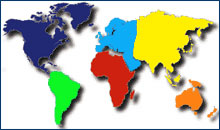Three square a day, European-style
European meals
Start the Day Off Right
Breakfast on the continent is usually, well, continental: a roll (or croissant) with butter or jam, plus coffee and/or orange juice.
Your hotel will almost undoubtedly serve such a meal at ridiculously high prices ($7 to $15). Some hotels try to justify the price by laying out cheese, ham, and fruit as well, but you're still better off heading to the corner cafe or bar and grabbing a croissant and cappuccino alongside the locals on their way into work. It's the same grub as at the hotel, at less than half the price.
On the British Isles, though, you're in for a breakfast treat. At least once, if not more, indulge in a traditional English, Scottish, or Irish breakfast, which is a miniature smorgasbord of eggs, hams, cheese, oatmeal, sausages, "puddings," and jams.
Speaking of smorgasbords, Scandinavian countries are the other exception to the continental breakfast rule, offering breakfast as well as dinner versions of their famous sampler feasts.
Lunch: More Than a Sandwich
Across Europe, lunch is often a multi-course meal similar to dinner. Lunch used to be the big meal of the day (especially in southern Europe), but modern work schedules have slowly squeezed out the big lunch and added those extra hours to dinner.
This is just as well from a touring point of view, because you've got a lot of sightseeing to do during the day and probably won't want to spend more than an hour on lunch.
Lunch is a good meal to grab on the run or to plan a picnic for, which will save you both sightseeing time and money for a splurge at dinner. The only remnant of the large lunch is Sunday lunch, which is often still the biggest meal of the week and a time in many countries for extended families to get together and have a massive meal that lasts for hours.
The Marathon Dinner
The main meal of the day in Europe, which once was lunch but in today's rat race world is increasingly becoming dinner, is often a long, drawn-out affair of three to five courses (plus wine, water, coffee, liqueur, and dessert) that can last two to four hours.
In most of Europe, you're never rushed through a meal. Many Americans at first get annoyed in European restaurants because they think service is slow. It's not. The waiters are giving you time to savor every dish and the conversation at your table. After all, eating too quickly is bad for the digestion (so just think about how healthy you're being as you slowly spoon that creamy chocolate mousse into your mouth).
When exactly the dinner hour is, on the other hand, depends on where you are. As with so much else here, the trends vary as you move north to south. The Brits sit down to dinner between 5 and 6pm, the Italians start around 7:30 or 8pm. In Spain, restaurants don't even open until 9pm, and most customers don't arrive until 10pm. But don't worry that you'll be famished by dinnertime; in the countries where dinner starts late, there's usually a traditional evening stroll around 5pm during which you're expected to nibble on munchies (pizza in Italy, tapas in Spain, and so on).
Related Articles |
Outside Resources |
This article was last updated in August 2007. All information was accurate at the time.
Copyright © 1998–2010 by Reid Bramblett. Author: Reid Bramblett.



 ShareThis
ShareThis

